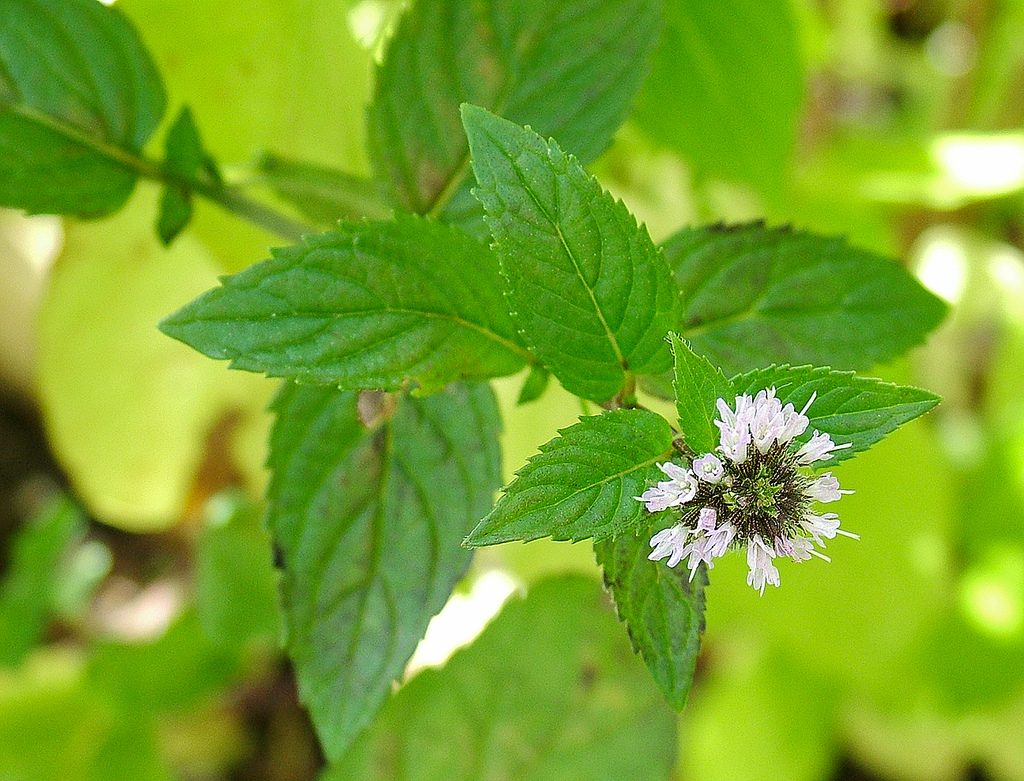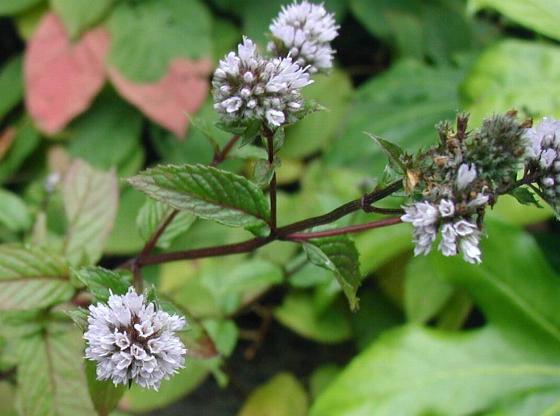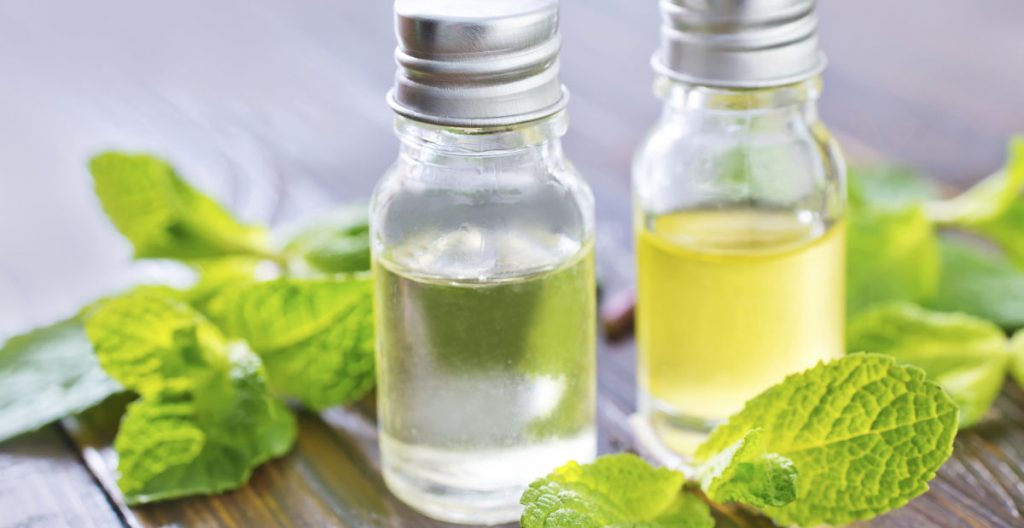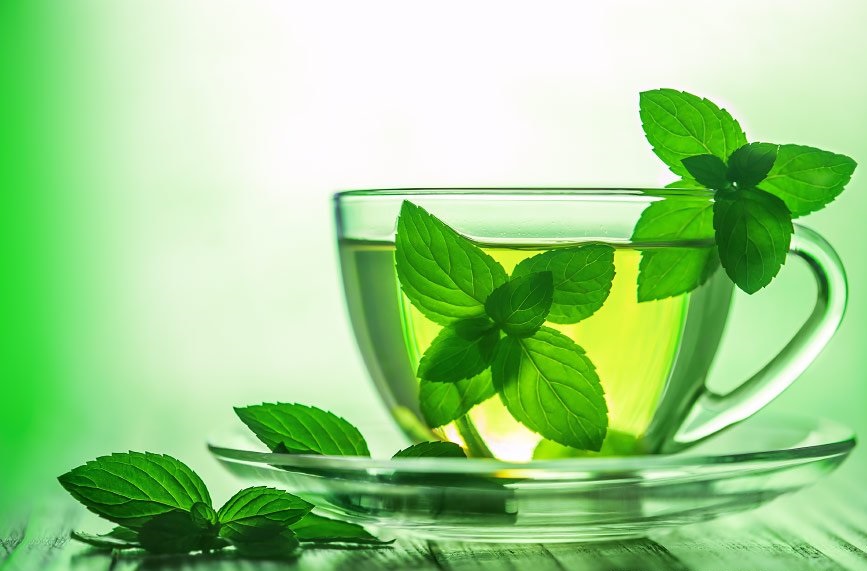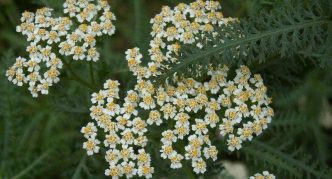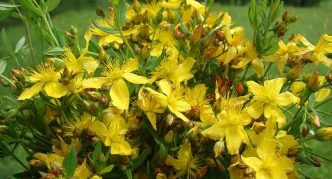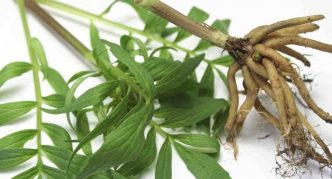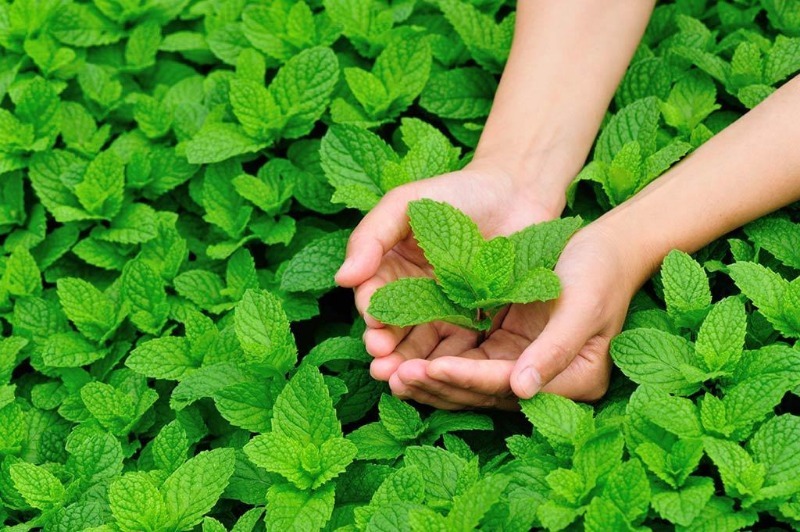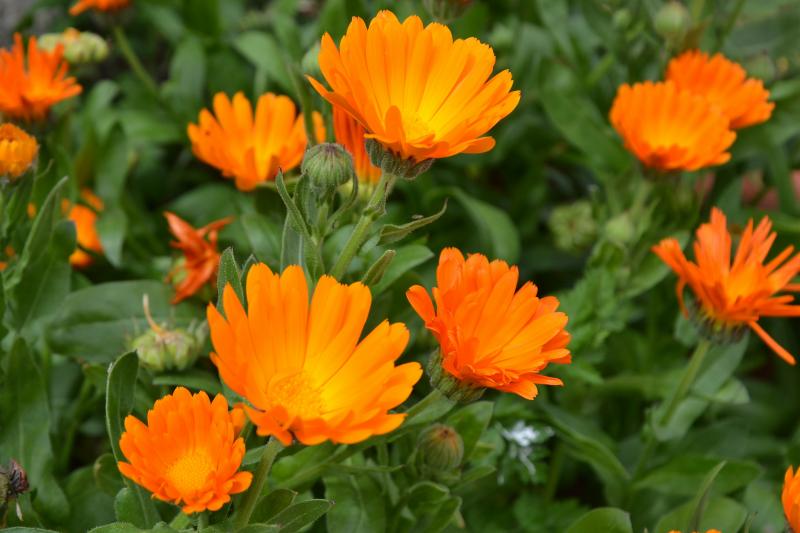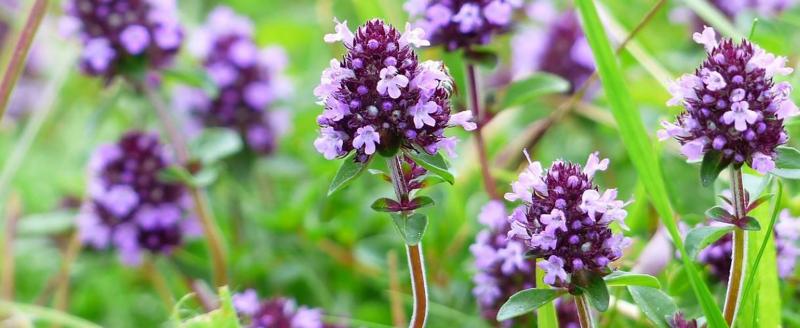Herbal medicine is a long-known form of herbal treatment. Many familiar plants have medicinal properties, including peppermint. Everyone can grow unpretentious plants with a bright smell in their own garden and, if necessary, use them not only for culinary purposes, but also for solving some health problems. If you take into account some contraindications, then you can get a significant help in the treatment of all sorts of ailments.
Content
Where it grows and how it looks
Mint is one of the most common spicy plants, numbering about 300 species (field, lemon, menthol, curly). The plant comes from the Mediterranean, it has long been used in Ancient Greece, Rome and other countries for perfumery and medicinal purposes.
Peppermint (otherwise called "English" and "cold") is a perennial herb, reaching a height of 50–100 cm. It is a cultivated plant obtained by crossing water and garden mint. The two main varieties of pepper are white, which has green stems, and black (stems are dark red and dark foliage).
Plants are highly bushy. Strong tetrahedral stems can be bare or covered with sparse hairs. The pointed leaves with a sharp-edged edge are usually oblong or ovoid. Small flowers, collected in spike-shaped inflorescences, have a light purple or reddish color. Flowering begins in June - July and lasts until August - September. The beginning of the accumulation of essential oils occurs simultaneously with the flowering of the plant, therefore, the collection of mint is timed to the period July - August.
Currently, there are about 2 dozen breeding varieties of peppermint. It is grown everywhere (in the countries of America, Europe, Asia). In Russia, industrial cultivation has been established in the Voronezh region and the Krasnodar Territory. The most famous domestic, Belarusian and Ukrainian varieties: Prilukskaya, Medicinal 4, Ukrainian pepper, Zagadka, Ocharovanie.
A little about the characteristics of the plant: video
The healing properties of peppermint
Its beneficial properties are explained by its unique chemical composition. Its leaves and stems contain tannins, ascorbic, caffeic and other acids, as well as vitamin P, glucose and a number of other useful elements. The seeds contain about 20% oil.
For medicinal and cosmetic purposes, they use leaves, essential oil and menthol.
Leaves are usually not used fresh, but infusions and decoctions are prepared from them, as well as baths and lotions. Infusions of leaves, mixed with the addition of peppermint oil, make up the tincture "Mint drops", which is a means of stimulating appetite and antispasmodic for the stomach.
Peppermint is beneficial for a number of unpleasant symptoms:
- improves digestion, helps with nausea, is used as a choleretic;
- acts as a mild sedative and pain reliever, relieves headaches;
- in case of sleep disturbance, mint works as a weak sleeping pill;
- decoctions and infusions help to stop inflammatory processes;
- mint helps to relax muscles, so it can be used for stomach or intestinal cramps;
- helps to reduce flatulence;
- used for the complex treatment of cardiovascular diseases, as it causes vasodilation;
- boiled leaves with the addition of honey helps to ease breathing in case of colds;
- infusions relieve itching and help with other skin diseases;
- rinsing with mint broth helps with stomatitis;
- used in the treatment of diseases of the urinary system.
Benefits for men, women and children
For women, mint is considered especially useful: on its basis, formulations are prepared for the treatment of inflammation of the female genital organs. In addition, it is recommended to take it to alleviate the condition with menopausal syndrome. Many women may be interested in the plant as a cosmetic product that reduces the oily sheen of the skin, tightens pores and helps eliminate acne.
For men, mint can help in quitting smoking, if, with an acute desire to smoke a cigarette, take 2-3 sips of tea.
For children, mint is used as a sedative. For restless babies, baths are arranged with the addition of mint infusion, and from the age of 3, weak tea can be given.
Using peppermint oil
The valuable essential oil is found in all terrestrial parts of the plant. The largest percentage of oil content in flowers (4-6%), about half the amount of oil is contained in leaves (2.4-2.75%), and very little is present in the stems. To extract the oil, mint is distilled with steam. The oil is transparent, yellowish or greenish in color, with a pleasant refreshing taste and aroma. When stored for a long time, it thickens and darkens.
Peppermint oil is primarily used as a raw material for the manufacture of menthol, which is used in the production of liqueurs, sweets, is introduced into toothpastes and powders, and is used in pharmaceuticals (menthol petroleum jelly for the treatment of a cold, menthol sticks for migraine and in pure form for inhalation and internal use for various diseases).
Contraindications to use
Like other remedies, the plant has a number of contraindications. True, there are not too many of them, but it is necessary to take into account the potential harm of mint.
Complete contraindications for use:
- hypotension;
- allergy to menthol;
- varicose veins (a decrease in vascular tone when taken can aggravate the situation);
- children under 3 years old should not take mint preparations inside, it is especially contraindicated in infants - it can even lead to respiratory arrest;
- the problem of infertility (from mint it only gets worse);
- increased sleepiness.
In addition to the above points, it should be borne in mind that you should not drink mint tea before driving. There is also an incompletely verified statement about the negative impact on male libido.
Long-term use can be harmful: the sphincter between the esophagus and the stomach relaxes, so that the digestive juice is thrown into the esophagus, leading to heartburn.
Can I use during pregnancy and breastfeeding?
Since mint is one of the best remedies for nausea and vomiting, it helps pregnant women cope with toxicosis.
Pregnant women should not take drugs that contain peppermint oil!
Peppermint decoctions are especially recommended in the first trimester of pregnancy to relieve anxiety, reduce symptoms of toxicosis and improve skin condition. To reduce nausea, it is recommended to take mint in the following forms:
- Put 2-3 teaspoons of leaves in boiling water (200-250 ml), boil for 3-4 minutes, leave under the lid for 10 minutes, drain. Drinking a cup of this chilled tea before meals can help reduce nausea and increase appetite. You can also rinse your mouth with a warm broth;
- if signs of nausea appear, knead a fresh mint leaf with your fingers and inhale deeply several times.
In the second trimester, which usually passes without toxicosis, mint is used to improve digestion and increase appetite, adding fresh mint leaves to food.
In the last trimester of pregnancy, decoctions are recommended in case of anxiety, signs of late toxicosis and itching of the skin of the abdomen and legs.
In the later stages of gestation, it is better not to use mint - it tones the uterus and can cause premature birth.
You can not use mint for those pregnant women who have stones in the gallbladder. It stimulates the secretion of bile and can cause the stone to move, which is completely undesirable during pregnancy.
Although mint is considered acceptable for pregnant women, it is best to consult a doctor before using it.
It is not recommended for nursing women to consume peppermint regularly as it reduces activity and can lead to irregular heart rhythms. Nevertheless, in case of problems with lactation, the plant helps, as it improves blood circulation. Therefore, rare single doses of broth by nursing mothers are allowed.
Use for various conditions of the body
Peppermint can be used to improve the health of the body in a variety of ways.
Cold. With a cold, the upper respiratory tract is primarily affected. Peppermint promotes the secretion of phlegm and is recommended as an expectorant. Inhalation with the addition of peppermint oil treats a cold.
Insomnia. The soothing effect of mint is especially noticeable for sleep problems. To relieve overexcitation and treat insomnia, alcohol tinctures of menthol and oil solutions are used, and at home you can use a concentrated decoction or infusion of leaves.
Hangover. Considering that mint relieves nausea and heaviness in the stomach and relieves headaches, it is an indispensable remedy for hangover syndrome.
Violation of the menstrual cycle. Mint tea and oil can help relieve pain during periods, stabilize hormones, and regulate your cycle.
Diabetes. In diabetes mellitus, mint will be beneficial as a choleretic, as well as a means of stimulating the pancreas. Warm mint infusion helps lower glucose levels. Still, doctors recommend that diabetics be careful when using.
Acidic gastritis. Despite the fact that in some cases the constant use of mint leads to heartburn, it is successfully used to treat gastritis and even peptic ulcer disease. This is due to the plant's ability to relieve nervous excitement and nausea, often associated with stomach diseases, as well as its bactericidal effect.
Skin rashes. Mint lotions and baths help relieve irritation and itching of the skin and eliminate rashes.
Russian folk medicine has long used mint for the purpose of refreshing, to intensify the separation of bile and perspiration. Kidney stone disease is treated with fresh juice of mint leaves, the same juice with the addition of white wine is an effective diuretic.
Mint Potion Recipes
For the manufacture of medicinal drugs, the entire ground part of the mint is cut off. The yellowed and dried leaves are cut off, the stems are removed, leaving only high-quality leaves and inflorescences. For storage, it is best to dry it in the shade outdoors (shelf life 2 years). Freezing is a good storage method, allowing fresh mint to be used at any time of the year. You can make mint and lemon jam. Well boiled and rolled up in jars, it can last all winter and be used to treat bronchitis, sore throats and colds.
As a rule, peppermint is consumed internally in the form of an infusion of leaves. It is prepared with 2 tablespoons of fresh or dried leaves and 0.2 ml of freshly squeezed water. The mixture is covered with a lid, wrapped in a warm cloth and left for 1–1.5 hours. The resulting liquid is filtered and taken in 50-70 ml before meals. This drug is used to treat migraines and colds. In addition, such an infusion helps to get rid of toxins in case of poisoning, if you drink it three times a day during a meal, 1 tablespoon.
You can make a mint infusion using a different recipe. Dry leaves (1 tablespoon) are brewed with a glass of boiling water and left for 1 / 2–2 / 3 hours, after which they are filtered. Such a drug will help with abdominal pain (take 1 tablespoon every 3 hours), with vomiting (1/2 cup) and to reduce the toxicosis of pregnant women (half a glass before meals twice or three times a day).
The same infusion will help with skin inflammation, itching or rashes, they are prepared by making lotions from it or wiping the skin of the face and body.
Fresh gruel from mint leaves will help with fungal diseases (mycoses) of the legs, if you put it on a sore spot for 50-60 minutes. You can grind the leaves with coarse salt.
During colds, bronchitis, sore throats, a good effect is given by taking tea from peppermint. To do this, it must be brewed like regular tea, pouring 1 tablespoon of crushed dry leaves with 0.25 liters of boiling water and infusing for 10-15 minutes. To relieve coughing, you need to drip a little peppermint oil into the water and inhale.
Making mint jam - video
To cure gastric disorders, prevent gastritis and reduce nausea, an infusion of 2 teaspoons of dry mint leaves per 200–250 ml of boiling water is made. The liquid is left for 0.5 hour, filtered and drunk 15–20 minutes before eating, 60–70 ml twice a day.
With nausea and vomiting, relief will be brought by taking 20-25 drops of alcoholic tincture of mint, dissolved in a glass of water.
For the treatment of gastritis caused by acidity, mint alone is not enough. It is added in an amount of 15 g to a mixture of other medicinal herbs: yarrow (15 g), St. John's wort (30 g), bean (one pinch). Crushed, well-mixed herbs are poured with boiling water (0.4 l), left for 2-3 hours, filtered. The resulting drink should be drunk during the day in portions of 70 ml.
For patients with gastritis with low acidity, herbal tea is prepared, which includes peppermint (20 g), marsh cumin and knotweed (15 g each), yarrow, chamomile and valerian roots (10 g each), dill and caraway seeds (10 g each) ), hops (5 g). The mixture of ingredients is brewed with 1 liter of boiling water, wrapped and left overnight. 1 glass should be drunk in the morning on an empty stomach, the rest - during the day at regular intervals.
Medicinal herbs included in the collection along with peppermint, in the photo
- Yarrow has anti-inflammatory and bactericidal action, promotes wound healing
- St. John's wort is used as an antibacterial, antiseptic, analgesic, wound healing, antirheumatic, diuretic, choleretic, astringent, antihelminthic agent, and also as a regenerating drug.
- Pharmacy chamomile is a strong antiseptic with anti-inflammatory, antispasmodic, choleretic, astringent, diuretic properties
- Valerian root is a good sedative that enhances the properties of mint
To prevent hypertensive attacks, use a collection of peppermint, chamomile and valerian (proportion 1: 1: 0.5). Having prepared an infusion from these herbs, they drink it at 60–70 ml per day for 30 days.
The unpleasant sensations arising from menopause help to ease the peppermint decoction. Dry mint leaves (2 teaspoons) are placed in hot water (0.5 l) and boiled.
1 tablespoon of leaves, filled with 0.5 liters of boiling water and infused for 2 hours, will help eliminate bad breath if you use an infusion for rinsing the mouth.
Peppermint for 40 diseases - video
For headaches, mint can be used in a number of ways:
- bandage fresh leaves to the forehead;
- drink water with the addition of mint tincture - 10-15 drops per 200 ml. To prepare the tincture, finely crumbled leaves should be infused for 7–8 days in 70% alcohol in a ratio of 1:20), adding them to water (200 ml);
- mint, infused with a triple cologne, is used to rub the frontal, temporal and occipital parts of the head;
- rub mint oil into the skin of the forehead and temples.
Taking peppermint tincture will help alleviate the symptoms of a hangover - it will relieve headaches and heaviness in the stomach. A good remedy is an infusion of mint and sage (1: 1 ratio), which, after brewing, is left in a warm place for 2-3 hours.
How to treat the liver - video
People with diabetes are advised to drink 0.25 cups of broth of mint leaves (1 teaspoon) and dandelion roots (3 teaspoons) 2-4 times a day. The specified amount of raw materials is poured with a glass of water, boiled for 6-7 minutes, insisted for 0.5 hours and filtered. This broth also improves the activity of the pancreas and has a choleretic effect.
In the presence of stones in the gallbladder, take half a glass (50–70 ml for children) of infusion of 1 teaspoon of mint leaves per 0.25 liters of boiling water (leave for 30 minutes, filter, squeeze out the cake).
For neuroses and insomnia, an infusion is prepared according to the following recipe: 20 g of dried leaves are poured into 0.5 liters of warm water, insisted for 6-8 hours, filtered. Is taken before bedtime (adults 100 ml, children 50-70 ml).
How to make a mint tincture yourself at home - video
Beauty recipes
Peppermint is not only a medicine, but also irreplaceable in cosmetology: it is added to hair and skin masks, compresses, and creams.
Benefits for hair
Mint infusion, if rinsed with it, helps to heal the scalp and hair (especially dry or dyed). The pleasant smell invigorates and cheers up.
An even more effective means for maintaining the beauty of hair is a decoction of mint leaves and the same number of linden inflorescences. This mixture should be poured with 400 ml of boiled water and heated in a water bath for 15–20 minutes. Do not bring the broth to a boil!
The broth must be filtered and used for rinsing and even washing hair (with daily shampooing).
For the treatment of dandruff, prepare a composition of 2 tablespoons of castor oil and 2-3 drops of peppermint oil. The mask is applied to the hair and left for 30–35 minutes under a plastic cap, washed off with shampoo.
The use of peppermint essential oil to maintain the beauty of skin and hair - video
For skin beauty
To narrow the pores and reduce the fat content of the skin, make masks of the following composition: 2 teaspoons of crushed mint leaves, string, chamomile plants are mixed, ground oatmeal is added (3 teaspoons), boiling water is added until the consistency of thick sour cream is obtained, heated in a water bath 10– 15 minutes.
The mask applied to the skin is covered with a towel. You can wash it off with plain water, and after the mask, apply argan oil to the skin.
To moisturize the skin, prepare a similar mask of mint, chamomile and plantain.
Peppermint is an unpretentious crop that does not require a lot of effort to grow, but it will be of great benefit for a variety of diseases.For a healthy person, mint will be a pleasant ingredient in various culinary masterpieces. In order to avoid trouble, before using mint, you must familiarize yourself with the contraindications for use.
